 "ttyymmnn" (ttyymmnn)
"ttyymmnn" (ttyymmnn)
01/01/2016 at 12:35 • Filed to: planelopnik, planelopnik history
 9
9
 4
4
 "ttyymmnn" (ttyymmnn)
"ttyymmnn" (ttyymmnn)
01/01/2016 at 12:35 • Filed to: planelopnik, planelopnik history |  9 9
|  4 4 |
Welcome to This Date in Aviation History , getting you caught up on milestones and important historical events in aviation from December 30 through January 1.
!!! UNKNOWN CONTENT TYPE !!!
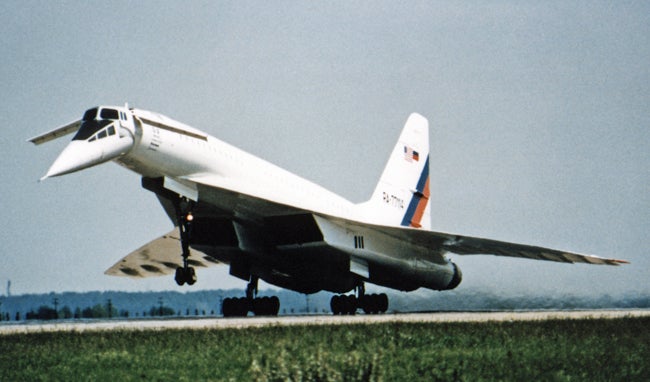
December 30, 1968 – The first flight of the Tupolev Tu-144.
When the jet engine became the preferred propulsion for aircraft following WWII, the race was on to create the fastest aircraft possible. The goal was to break the sound barrier, and that achievement was reached on October 14, 1947, when USAF test pilot
!!!error: Indecipherable SUB-paragraph formatting!!!
flew the
!!!error: Indecipherable SUB-paragraph formatting!!!
beyond Mach 1. Supersonic flight eventually became a standard feature of many fighters, and eventually bombers, but it would be more than twenty years before the first supersonic passenger plane took to the skies. That aircraft would be the Russian-built Tupolev Tu-144, and while it beat its Anglo-French competitor
!!!error: Indecipherable SUB-paragraph formatting!!!
into the air by one month, it had a much more checkered career. Development of the Tu-144 (NATO reporting name Charger, and more commonly known in the West as “Concordski”) began in July of 1963, and progressed alongside its Western counterpart. Developed at the same time as Concorde, the Tu-144 was first in the air, beating Concorde by a month. And while it bore a strong resemblance to European design, it was a much different airplane. The Russians were unable to purchase the system used by the Concorde due to restrictions on sales to Russia for technology that could be used militarily, and, as a result, the Tu-144 had a less advanced system of braking and engine control. However, like the Concorde, the Tu-144 used the aircraft’s fuel as a coolant for the cabin air conditioning system and to cool the hydraulic system. But the most notable difference in the design between the two aircraft was Tupolev’s addition of two retractable “mustache” canards at the front of the fuselage. Since the wing of the Tu-144 was not as advanced as that of the Concorde, these canards improved handling at low speeds. Unfortunately, the Tu-144 is perhaps best known for a highly publicized crash in 1973 of the second prototype during a demonstration at the Paris Air Show, killing the crew of six as well as eight on the ground. Accounts differ on what caused the crash. The Russians claim it was caused by a French Mirage fighter that was trying to photograph the airliner and got too close, while others suggest that the pilots were trying too hard to impress the crowed and flew the aircraft beyond its capabilities. Regardless, the crash was a major embarrassment for the Russian government, and Tupolev, and set the program back. The Tu-144 entered service in 1975, still ahead of Concorde, but did so by flying mail and other cargo, and didn’t make its first passenger flights until 1977. But a second crash in 1978 led the Russian government to ban its use for further passenger flights, and the Tu-144 ended its passenger career after just 55 commercial flights. Cargo flights continued until 1983 before serious reliability issues and lack of funding ended the program for good.
(NASA photo)
!!! UNKNOWN CONTENT TYPE !!!

December 30, 1947 – The first flight of the Mikoyan-Gurevich MiG-15. At the end of WWII, Russia captured early turbojet technology from the Germans, but they were unable to produce a reliable engine. So they turned to Britain to see if they could procure the !!!error: Indecipherable SUB-paragraph formatting!!! engine. Stalin was convinced that the British would never let them have the engine, but inexplicably, the British gave the Russians sample engines and the blueprints for their construction. Now the Russians had an engine, but they still needed a fighter to put it in. Along with the jet engine technology the Russians obtained from Germany at the end of the war, they also captured data regarding the benefits of a swept wing (information the Americans would use also), as well as unfinished German aircraft. One of those was the !!!error: Indecipherable SUB-paragraph formatting!!! , a design for a swept-wing fighter that never entered production. While the Russians have never really admitted it, it is very likely that the Focke-Wulf design had a heavy influence on the MiG-15, with its 35-degree swept wing mounted in the middle of the fuselage and its swept tailplane. The new Russian fighter bore a very strong resemblance to the Ta-183, and it’s likely that captured German technicians helped with the design of the new Russian fighter. The new fighter, NATO reporting name Fagot, was originally designed to defend Russia from waves of enemy bombers, and to that end it was armed with two 23mm cannons and one 37mm cannon, while contemporary American designs still carried machine guns for aerial dogfighting. This armament choice put the MiG-15 at somewhat of a disadvantage during the Korean War, when the low rate of fire and low muzzle velocity made it difficult to hit small, maneuverable targets. Still, when the MiG-15 appeared in the skies over Korea in 1950, Allied pilots were surprised by the little fighter’s maneuverability. It clearly outclassed American straight-wing designs, and when compared to its closest rival, the !!!error: Indecipherable SUB-paragraph formatting!!! , the MiG-15 enjoyed a better climb rate, higher ceiling and better acceleration. It was only the superior training of the American pilots that allowed them to gain air supremacy. A staggering 18,000 MiG-15s were produced, a third of those under license in Soviet bloc countries. Over forty nations received export versions of the MiG-15, and it is still flown by North Korea as a jet trainer. (Photo by D. Miller via !!!error: Indecipherable SUB-paragraph formatting!!! )
!!! UNKNOWN CONTENT TYPE !!!
Short Take Off
!!! UNKNOWN CONTENT TYPE !!!
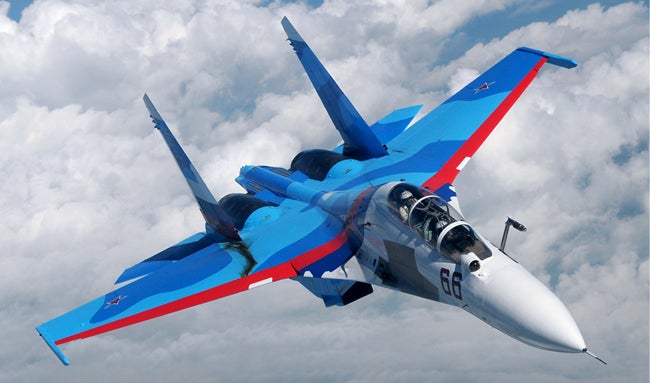
December 31, 1989 – The first flight of the Sukhoi Su-30. Known to NATO as the Flanker, the Su-30 is an all-weather, air-to-air and air-to-surface fighter that employs thrust vectoring for so-called !!!error: Indecipherable SUB-paragraph formatting!!! . The Su-30 is a development of the !!!error: Indecipherable SUB-paragraph formatting!!! , and was primarily developed for export. Powered by pair of Saturn AL-31F afterburning turbofan engines, the Su-30 is capable of Mach 2 in level flight with a range of 3,000 kilometers. The Flanker is built by two different companies in a myriad of configurations for its international customers, and several have recently been deployed to Syria in support of the Assad regime. (Photo by Sergey Krivchikov via !!!error: Indecipherable SUB-paragraph formatting!!! )
!!! UNKNOWN CONTENT TYPE !!!
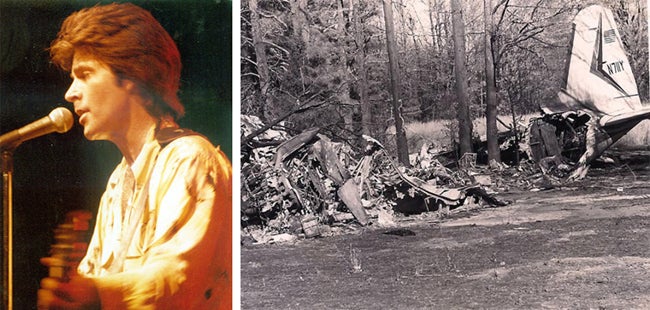
December 31, 1985 – The death of musician Ricky Nelson in a plane crash.
While flying from Guntersville, Alabama to Dallas, Texas, Nelson’s leased
!!!error: Indecipherable SUB-paragraph formatting!!!
(N711Y) crashed just two miles from the runway after an emergency diversion for smoke in the cabin. The pilots, who survived but were seriously burned, provided differing accounts of the events leading up to the crash, though they both agreed that a gas heater in the cabin had been malfunctioning prior to the crash, which caused the deaths of seven of the nine passengers. The cause of the crash was officially listed as unknown, though it was likely caused by a fire started by the recalcitrant heater.
(Crash photo author unknown; Nelson photo by anyjazz65 via
!!!error: Indecipherable SUB-paragraph formatting!!!
)
!!! UNKNOWN CONTENT TYPE !!!
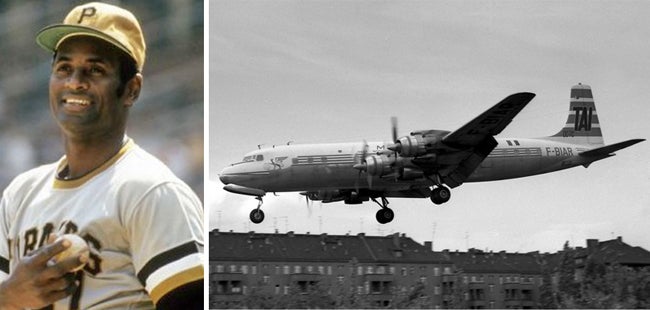
December 31, 1972 – The death of Roberto Clemente in a plane crash. Clemente, a right fielder for the Pittsburgh Pirates in his 18th MLB season, was well known for charity work in his native Puerto Rico, as well as other parts of Central America and the Caribbean. Following a devastating !!!error: Indecipherable SUB-paragraph formatting!!! in Nicaragua, Clemente organized relief flights to take supplies to the victims. While accompanying the third relief flight, his chartered !!!error: Indecipherable SUB-paragraph formatting!!! crashed on takeoff from Puerto Rico, killing all on board. Clemente’s body was never recovered. Reports indicated that the plane, which was poorly maintained, was also overweight at the time of the crash. Clemente was posthumously inducted into the Baseball Hall of Fame the following year. (DC-7 photo by Ralf Manteufel via !!!error: Indecipherable SUB-paragraph formatting!!! ; Clemente photo author unknown)
!!! UNKNOWN CONTENT TYPE !!!
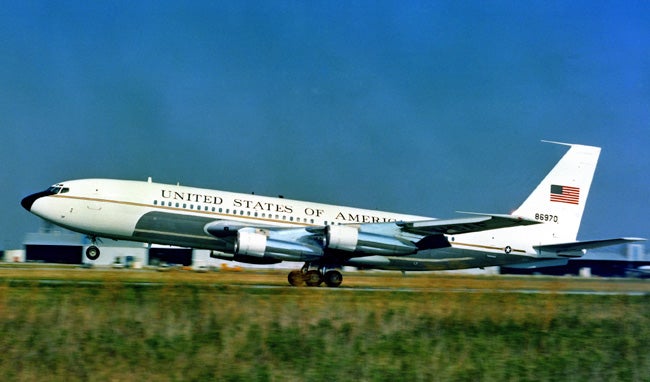
December 31, 1958 – The first flight of the Boeing C-137 Stratoliner.
The USAF purchased a limited number of Boeing 707 airliners, and these were listed in the Air Force inventory as either the C-18 or the VC-137. Three aircraft were purchased for VIP transport with the designation VC-137A, and these were eventually given upgraded engines and designated VC-137B. Two of these aircraft were subsequently upgraded to the VC-137C, and these were the first jet-powered presidential aircraft, with tail number SAM 26000 and SAM 27000.
(US Air Force photo)
!!! UNKNOWN CONTENT TYPE !!!
!!! UNKNOWN HEADER TYPE (MULTI-LINE BREAK?) !!!
!!! UNKNOWN CONTENT TYPE !!!
!!! UNKNOWN CONTENT TYPE !!!
!!! UNKNOWN CONTENT TYPE !!!
!!! UNKNOWN CONTENT TYPE !!!
If you enjoy these Aviation History posts, please let me know in the comments. And if you missed any of the past articles, you can find them all at
!!!error: Indecipherable SUB-paragraph formatting!!!
.
!!! UNKNOWN CONTENT TYPE !!!
 Cé hé sin
> ttyymmnn
Cé hé sin
> ttyymmnn
01/01/2016 at 13:07 |
|
Interestingly, the Tu 144 (the one in the picture in fact) came out of retirement in the 1990s when one was used by amongst others NASA for research into a proposed high speed plane which was later abandoned to lack of money.
 ttyymmnn
> Cé hé sin
ttyymmnn
> Cé hé sin
01/01/2016 at 13:35 |
|
Yup. Thanks for adding that. I didn’t have the room!
 Skunk
> ttyymmnn
Skunk
> ttyymmnn
01/10/2016 at 17:45 |
|

Interesting... what are the symbols about?
 ttyymmnn
> Skunk
ttyymmnn
> Skunk
01/10/2016 at 17:50 |
|
It’s an American and a Russian flag. See below.
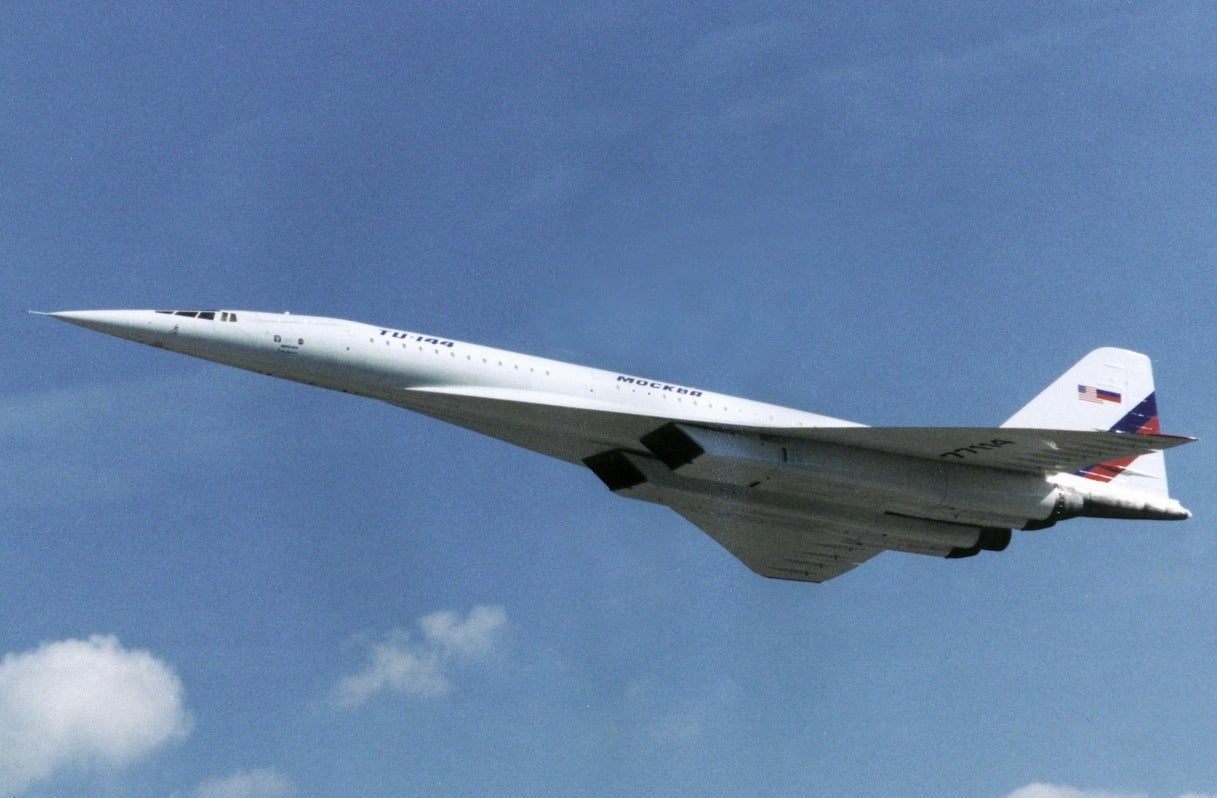
The National Aeronautics and Space Administration (NASA) teamed with American and Russian aerospace industries over a five-year period in a joint international research program to develop technologies for a proposed future second-generation supersonic airliner to be developed in the 21st century. The centerpiece of the project was the Tu-144LL, a former first-generation Russian supersonic jetliner that was modified by its developer, Tupolev ANTK, into a flying laboratory for supersonic research.
Using the Tu-144LL to conduct flight experiments allowed researchers to compare full-scale supersonic aircraft flight data with results from models in wind tunnels, computer-aided techniques and other flight tests. The flight experiments provided unique aerodynamic, structures, acoustics and operating environment data on supersonic passenger aircraft.
Six flight and two ground experiments were conducted during the program’s first flight phase, which began in June 1996 and concluded in February 1998 after 19 research flights. A shorter follow-on program involving about seven flights began in September 1998 and concluded in April 1999. All flights were conducted in Russia from Tupolev’s facility at the Zhukovsky Air Development Center near Moscow. (
NASA
)